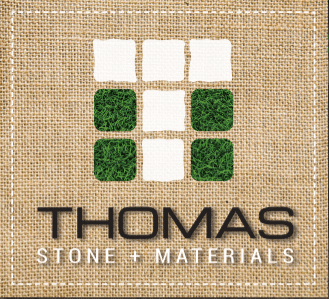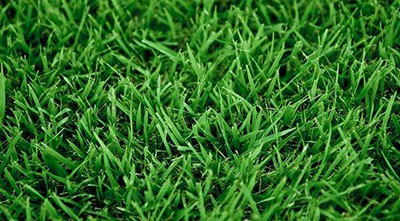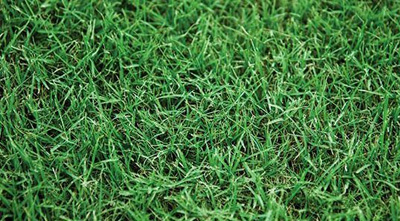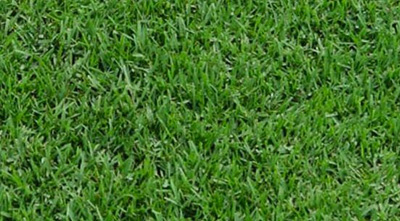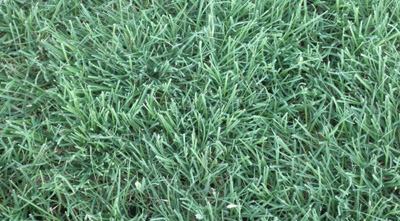Selecting Your Turfgrass
The first step to a beautiful lawn is deciding on the right type of turfgrass for your project. First, look for turfgrass suited to your geographic area and conditions. Thomas Stone & Materials carries only high-quality turfgrass that’s proven to thrive in South and Central Texas.
Next, narrow your search further by considering these factors for the space your turfgrass will go:
- Exposure to sunlight
- Soil depth & quality
- Intended use – lawn, golf course, etc.
- Amount & type of traffic
- Annual rainfall or available irrigation
- Desired maintenance
With an understanding of the area you’ll be placing the sod in, consider the best varieties available and each of their strengths/weaknesses. Here’s a look at the top varieties for our area, all available at Thomas Stone & Materials.
ZOYSIA
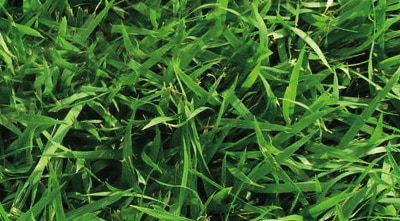
JaMur is one of the most versatile grasses on the market today. It does well in sun or shade, cold or heat. With its adaptability to full sun and moderate shade sites, JaMur is a medium textured grass and needs less water and less fertilizer than other standard lawn grasses. Once established, this dense turf tends to choke out weeds. Its attractive blue-green color is the best choice for high visibility areas and high traffic applications.
Palisades is a medium-textured grass that is noted for its shade tolerance, low water use and minimal fertilizer requirements. Since it is a slow growing, non-encroaching grass, Palisades requires less mowing and requires little to no edging. Other features of Palisades are its resistance to insects and weed invasions.
Zeon is one of the most shade tolerant, fastest growing zoysias on the market. This fine bladed grass has exceptional shade and drought tolerance, low thatch production and improved traffic tolerance. Zeon recovers quickly from injury due to its extensive root system. It has a beautiful dark green color and soft leaf texture making it a true “barefoot lawn grass”.
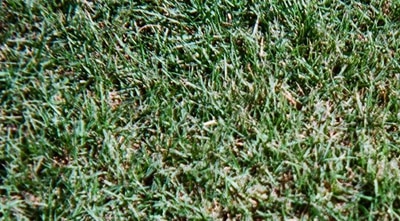
This zoysia is a medium-textured zoysia widely used for home lawns in Texas. Compatible with a wide range of soil conditions, it’s a low-mowing turf that can handle sun or shade, has good drought tolerance and has few insect or disease problems.
BERMUDA
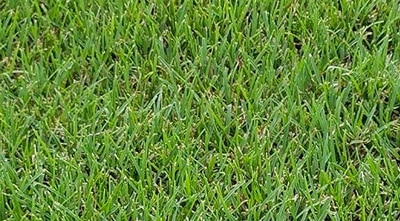
This is the newest “Tif” release from the world-renowned University of Georgia turf breeding program. It has superior drought and wear tolerance while consistently maintaining excellent turf quality. TifTuf has been scientifically proven to use 38% less water than any other bermudagrass. In addition, TifTuf color retention and spring green up is unmatched. Not only will it pay for itself in reduced water costs, but TifTuf contributes to environmental stewardship by conserving water.
This is a warm season grass that has a proven record for withstanding the varying types of Texas weather. Dark green in color, the fine textured, dense turf is commonly used on golf course fairways, sports fields, residential and commercial landscapes, and other high use areas. It delivers excellent performance at close mowing height (1/2″- 2″). Characteristics include excellent drought and heat tolerance (up to 110 degrees); rapid recovery from divots, sports activities, traffic and wear; swift recovery after winter dormancy; and resistance to disease, weeds, and insects
Celebration is a blue-green grass that offers many practical advantages over other bermudagrass cultivars. Celebration is a top performer for drought tolerance, drought resistance and recovery, shade tolerance, wear tolerance and divot recovery. It offers exceptional performance across a wide spectrum of applications, offering durability, softness and a beautiful color.
AUGUSTINE
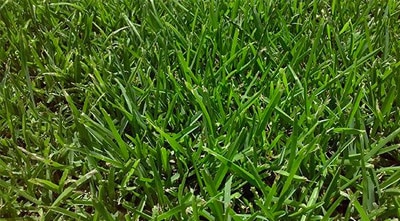
Raleigh has a medium green color with a coarse texture, and adapts well to heavier, organic, clay soils with medium to low soil pH. Raleigh thrives in moist, humid climates with mild winters and, as a result, is a popular grass for Gulf Coast areas. It has excellent salt tolerance, making it perfect for seaside lawns. This grass performs in sun or shade with at least 4 hours of sun daily. Raleigh recovers relatively quickly from moderate traffic.
Palmetto St. Augustine is a low-maintenance turf grass with a beautiful dark green color. Excellent shade and drought tolerance, cold hardiness, disease resistance, and softness to the touch feel make Palmetto the ideal turf grass for home and commercial applications throughout the Southern U.S. Palmetto demonstrates superior shade, cold, frost, heat and drought tolerance.
This is a native grass that creates a soft, plush blue-green lawn. This low-maintenance, drought-tolerant variety is best used in lawns that get full sun, but not much foot traffic; it can be damaged by heavy use. Buffalograss stays dormant in winter and during drought, and requires mowing very infrequently – as little as twice per year.
[SOURCE: https://www.gardenstylesanantonio.com/garden-tips-blog/plant/buffalo-grass/]
The Benefits Of Sod
Most people choose sod because it’s the quickest and easiest way to enjoy an established lawn. This is definitely true, but the advantages go far beyond that. Sod provides immediate soil erosion control, eliminates dust and mold problems, minimizes the need for weed control, and it can be planted year round in South Texas. Sod is also more versatile than most people realize. It is available in many of the best turfgrass varieties and it can be used for your full lawn or only in small areas. Choose the right grass for your available light; all grass requires a certain amount of sunlight to grow. Please check the variety requirements before ordering/planting.
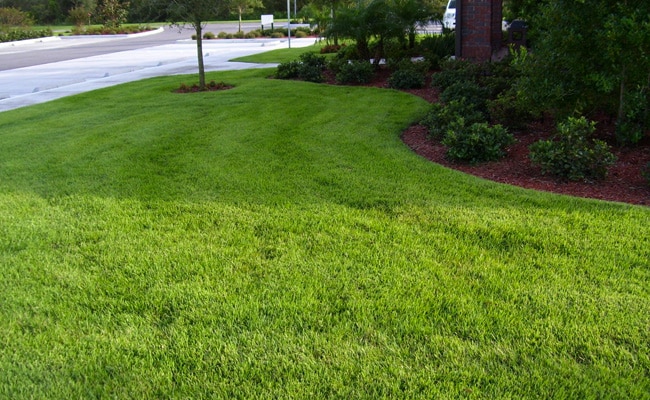
HOW Much Sod Do You Need?
Sod is sold by the square yard or square foot. 1 square yard of sod = 9 square feet (a pallet contains about 450 square feet). An acre is 43,560 square feet or 4,840 square yards.
How much does a pallet weigh?
Approximately 1,800 – 2,000lbs
How many pieces on a pallet?
Typically there are about 160 – 170 blocks (pieces) on 1 pallet.
To figure out what you need:
1. Try to square your yard up.
2. Measure Length X Width = Square Footage.
3. Divide that by 450 square feet (1-Pallet).
4. That will show how many pallets you will need.
Example:
1. 45′ X 60′ = 2,700 sq. ft.
2. 2,700 sq. ft. / 450 sq. ft.
3. = 6 Pallets of turf
A Simple Guide To a Beautiful Lawn
General Sod Information
Sod is available in three sizes.
1. By the pallet: 450 sq ft – great for residential areas
2. Big rolls: 42’x105′ – great for larger commerical project
3. By piece: 16″x24″ & sometimes 24″x24″ – small areas, patchwork, etc
- We require payment in advance on all grass orders since your grass is cut to order to ensure quality and FRESHNESS.
- Grass is usually available within 2 days; however, it may be longer in the fall & winter months.
- Augustine is sometimes available for same day delivery – call for availability.
- A valid credit card is required for all phone orders; however, you may elect to pay with other means on delivery.
Installing Your Own Sod:
Site Preparation: Sod survives best when planted on a well-prepared site. Begin with applying 4-6″ of topsoil preferably mixed with compost (Thomas Stone’s Top Soil Enriched [INSERT LINK] is the perfect layer to put down before installing sod). You may need to loosen existing soil by raking or tilling. If there is existing grass, you have several options. Remove it by digging it up, rototill it about 4-6″ deep, or mow the grass as short as possible and spray with a grass/weed killer 3-5 days prior to installing new grass. You may need to add a couple inches of new soil. Next, rake the ground to level and remove any visible debris from the soil, and use a roller to level the ground. Water the ground about 36 hours before you lay your sod.
Laying Sod: Lightly water the prepared area before laying the sod pieces. Lay the first line of sod along a straight line such as a driveway, sidewalk or a string stretched between two stakes. Staggering the sod as you lay it, like bricks, is recommended. Lay the pieces of sod together tightly without overlapping. Rolling your fresh sod helps eliminate air pockets and ensures uniform soil contact needed for good rooting.
Water as You Lay: Water as you lay the sod. Do not wait until you are finished. Stop every 30-45 minutes and use your hose or sprinkler system as you finish an area. Wet the ground so it’s moist as deep as four inches. Check under several pieces to make sure the ground is uniformly wet. After complete installation, make sure the ground and sod are heavily watered.
Maintaining New Sod: To encourage rooting, water every 2 to 3 days or just often enough to make sure the soil is moist (not wet) to a depth of 3 to 4 inches. Warm-season grasses sodded in late fall or winter may not be well rooted until spring and may need watering until spring rooting begins. In hotter weather (above 80 degrees F), new sod may need watering daily until it is well rooted. Avoid watering during the hottest part of the day as this could cause grass leaves to burn. Try to avoid any activities on your new sod until it’s well rooted.
Sod Planting Tips
- SOD SHOULD BE LAID WITHIN 24-36 HOURS OF RECEIPT OF GRASS; SOONER IN SUMMER.
- Sod requires contact with the soil and moisture to grow, so the ground needs to be as clear as possible before installing the sod.
- Water daily for the first two-three weeks. Be sure to apply ¾” to 1” of water per day. If placing in a shaded area, don’t over water, ¾” may be sufficient. Unless you receive ¾” or 1” of water during rainfall, you will still have to water. We recommend using a rain gauge.
- An irrigation system is recommended for best results.
- We recommend waiting at least 4 weeks before fertilizing newly planted sod.
- Wait until the sod is rooted before mowing. You can test area by pulling up on grass to see if it moves or not.

